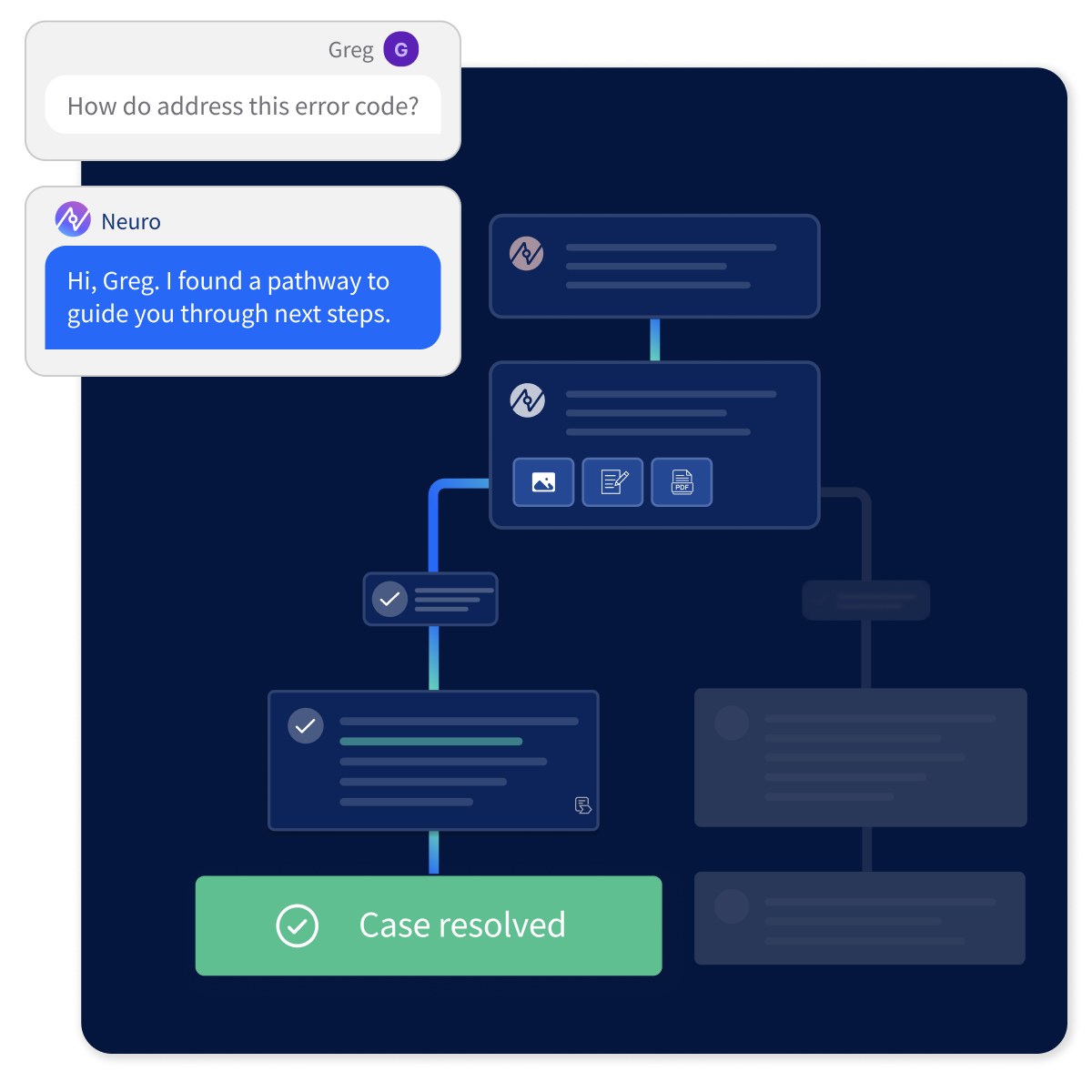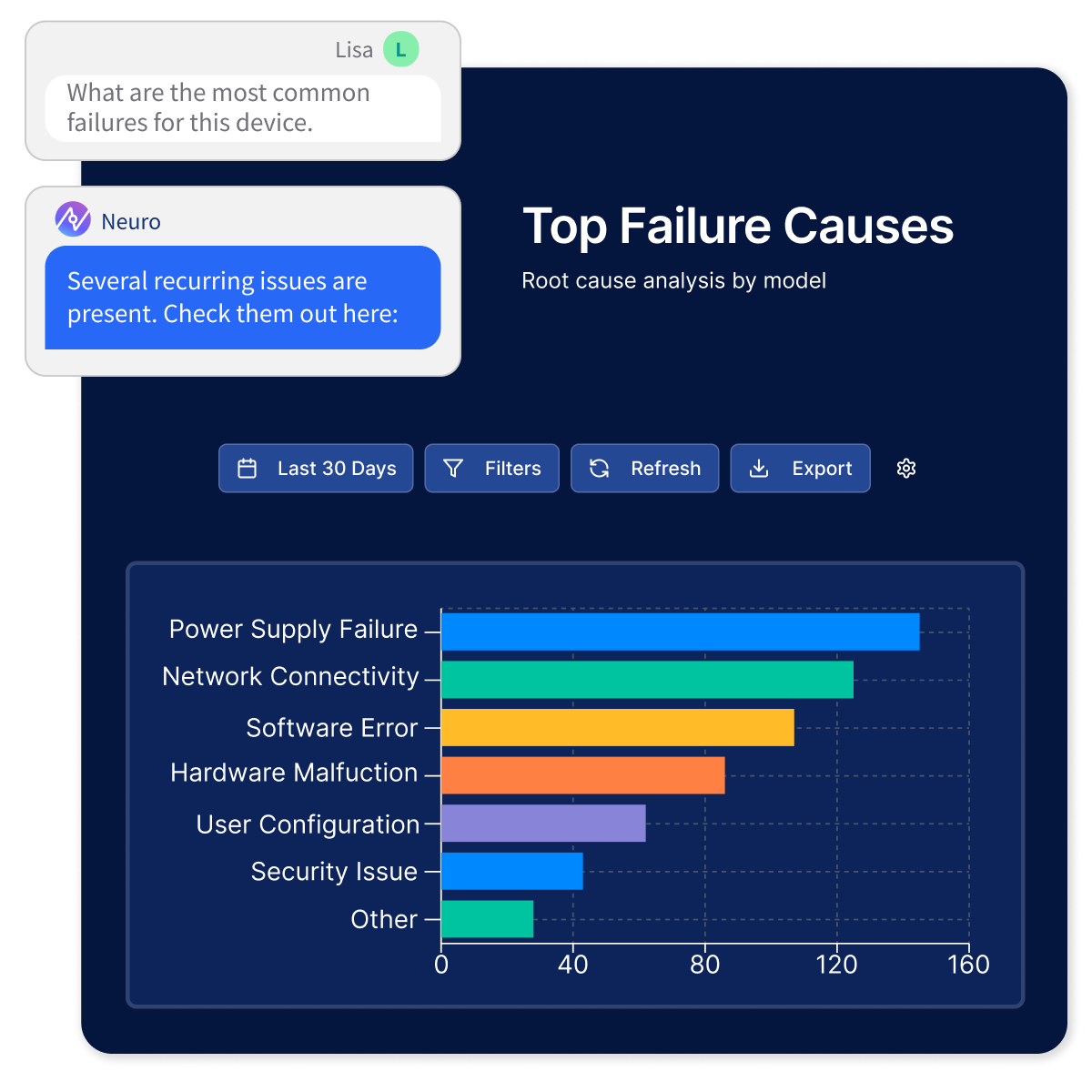Top 7 Use Cases for Service AI for 2026
.png)
AI is now the top investment area for service leaders, beating out technologies such as business intelligence and field service management, according to Service Council’s report, 2025 State of Artificial Intelligence & Service Technology.
With the power of AI to process vast amounts of data, spot patterns, predict outcomes, and continuously improve, there are a multitude of use cases that help service teams resolve service issues faster and improve CSAT.
But where should service leaders start? Analysts recommend focusing on use cases that drive fast, measurable ROI, and developing a system of KPIs to measure leading and lagging success.
Here are seven high-impact ways service organizations are applying AI today.
1. Knowledge Preservation
As veteran technicians approach retirement, the risk of losing critical institutional knowledge is a growing concern for service organizations. Knowledge capture ensures that valuable insights, troubleshooting techniques, and product-specific expertise don’t disappear when technicians leave the workforce. As noted in this Service Council article, “Baby Boomers make up between 15-20% of the current workforce, possess institutional knowledge, are dedicated...and are leaving the workforce at the greatest rate.”
AI can play a pivotal role in capturing and retaining expert knowledge, transforming it into structured, accessible data that can be shared with support agents, technicians and engineers. Using AI-driven knowledge management, service organizations can create digital repositories, automate workflows, and ensure that insights are readily available for the next generation. In addition to retaining expertise, this also helps to accelerate onboarding, improve troubleshooting, and maintain high service standards.
This strategy is already paying off: “Increased ability to capture expert knowledge” ranked fourth among the greatest impact of AI investments, only after improved customer service and improved experience for field service engineers and remote agents, according to the Service Council’s 2025 report.
“By providing real-time, interactive guidance, our teams can see significant improvements in resolution times and customer satisfaction."
-Sarah Rose, Vice President of Global Services, Daktronics
Investing in AI for knowledge capture isn’t just a precaution, it’s a strategic move that secures the long-term success and sustainability of service teams.
2. Guided Resolutions
Products are becoming more complex, with hardware, software, and connected data layers that require deeper troubleshooting expertise. At the same time, field and support teams are under pressure to solve issues faster and more accurately.
“Information and intelligence need to be easier. If the field service engineer is going to do a good job helping the patient, then I need to do a good job of making sure their tools are easy and work within the world that they already exist."
-Justin Herold, Senior Director Technology and Solutions, Boston Scientific

AI-powered guided workflows provide real-time, step-by-step guidance tailored to the issue, product, and customer context, eliminating guesswork. AI pulls from disparate systems to surface relevant steps that have worked in the past.
No surprise, 68% of surveyed service leaders plan to implement AI-guided workflows, according to the Service Council. When deployed effectively, they reduce downtime, escalations, and technician frustration.
3. First-Time Fix Optimization
Delayed resolutions and repeat visits continue to drive up service costs, especially when technicians rely on trial-and-error or limited documentation. Without a clear diagnostic path, teams often replace parts unnecessarily or escalate cases that could have been resolved on the first visit.
Improving first-time fix rates requires better visibility into root causes, faster access to repair guidance, and consistent processes across teams. AI can surface the most likely resolution paths based on real-world cases, service history, and equipment context, giving technicians what they need to act quickly and confidently.
After deploying AI-driven guidance to their field and tech support teams, Translogic, a healthcare equipment manufacturer, improved first-time fix performance with smarter diagnostics and more consistent guidance:
- 96% AI accuracy
- 18% increase in service level
- 960 warranty hours saved
“The beautiful thing about Neuron7 is that you can take resolutions from case history and instead of 3 hours of troubleshooting, the technician has the answer in 3 seconds."
- Dave Hartley, VP Customer Care, TransLogic
4. Faster Onboarding
Onboarding new service team members can be time consuming and resource intensive, especially when it comes to equipping them with the knowledge and expertise to handle complex service resolutions. Traditional training methods often involve long learning curves, with new hires relying on a mix of documentation, mentorship, and hands-on experience.
AI-driven solutions can transform onboarding by accelerating knowledge transfer and ensuring that new technicians have immediate access to the information they need. Organizations can provide new hires with real-time access to knowledge, allowing them to resolve issues as quickly as experienced technicians.
Service leaders recognize this benefit: In the Service Council’s 2025 report, one in four survey respondents said “Improving frontline employees onboarding and skills” is an urgent challenge to address through their AI and service technology efforts.
NCR Atleos implemented AI-powered resolutions to streamline information access for their field service technicians, enabling them to find precise answers from various data sources and reducing dependency on multiple knowledge platforms. That strategy, along with AI-powered guided resolution, “levels the playing field for newly onboarded technicians to be just as successful as a 10-year,” says Bill Girzone, Senior Vice President of global field services.
5. Service Insights
When service data is fragmented across systems, critical trends often go unnoticed. Teams struggle to identify recurring issues, misapply resources, and miss opportunities to improve service delivery. Without accurate categorization and case context, strategic decisions are based on incomplete information.
Service leaders need better visibility into what’s driving escalations, part usage, and resolution delays. AI-powered insights can classify cases with high accuracy, uncover root causes across product lines, and reveal where standard fixes fail to stick—giving teams the intelligence to prevent repeat issues and improve overall performance.
Keysight Technologies, a global leader in electronics testing and measurement, uses Neuron7 to improve triage and service planning with AI-powered case classification and insights:
- 90% accurate case classification
- Faster root cause identification
- Smarter resource allocation across teams
6. Parts Reduction
Managing service parts efficiently is a constant challenge for service organizations. Unnecessary part replacements, inaccurate diagnostics, and inefficient inventory management can drive up costs and lead to wasted resources. However, AI-powered solutions can transform how service teams handle parts management—helping them reduce unnecessary orders, optimize inventory, and ensure the right part is used at the right time.
By leveraging AI-driven diagnostics, predictive maintenance, and Intelligent Search, service organizations can minimize excess parts usage, improve first-time fix rates, and cut down on costly returns. AI helps technicians pinpoint the exact issue before ordering a replacement, recommends the correct parts based on historical data, and even enables self-service options that eliminate the need for parts in certain cases. The result? Lower costs, higher efficiency, and a more sustainable approach to service operations.
Terumo Blood and Cell Technologies is a global medical technology company. Its customer base includes blood centers, hospitals, therapeutic apheresis clinics, cell collection and processing organizations, researchers, and private medical practices—many of whom perform self-service. By using AI-powered solutions to deflect calls and reduce escalations, with results including:
- 13% increase in work orders resolved without requiring parts
- 20% deflected escalations
- 24% decrease in average part cost per escalated work order
- Nearly 3x ROI
That rapid ROI set the foundation to build a 10-year business case, says Rachael Castroverde, vice president of global services at Terumo BCT.
7. Preventative Recommendations
For service organizations, preventative maintenance is essential to keeping equipment running smoothly, minimizing unexpected failures, and reducing costly downtime. Traditional maintenance approaches often rely on scheduled servicing or reactive repairs—both of which can lead to inefficiencies and unnecessary part replacements. AI-powered solutions can transform preventative maintenance by making it smarter, data-driven, and proactive.

By leveraging AI-driven diagnostics, real-time data analysis, and predictive insights, service teams can anticipate failures before they happen, ensuring that equipment receives maintenance at the right time—not too soon and not too late.
AI can analyze vast amounts of service data, detect patterns, and recommend actions that extend equipment life, reduce service costs, and improve operational efficiency.
Next Steps
As the companies cited in this article found, it’s not just one but often multiple use cases that demonstrate how AI improves efficiencies, speeds resolutions, saves money, boosts productivity, and leads to greater customer and service agent satisfaction.
And with any new innovations and technology investments, identifying use cases is just part of the groundwork—a compelling business case comes next. That shouldn’t be a problem considering AI’s growing impact on the services function.
“Most organizations have messy data, multiple legacy systems, competing initiatives and their fair share of skeptics. However, ignoring AI is not an option for any business that wants to remain competitive,” according to the “Analyst’s Take” section of this research report.
The right vendor and partner will help service leaders build a business case for AI based on powerful use cases, including demonstrating value through a pilot and delivering relevant customer stories with proven results.
Build Your AI Strategy
Start building your AI roadmap now. Visit the AI Strategy Resource Center or contact us to chat about your service AI strategy for 2026.
Other Blog Posts




